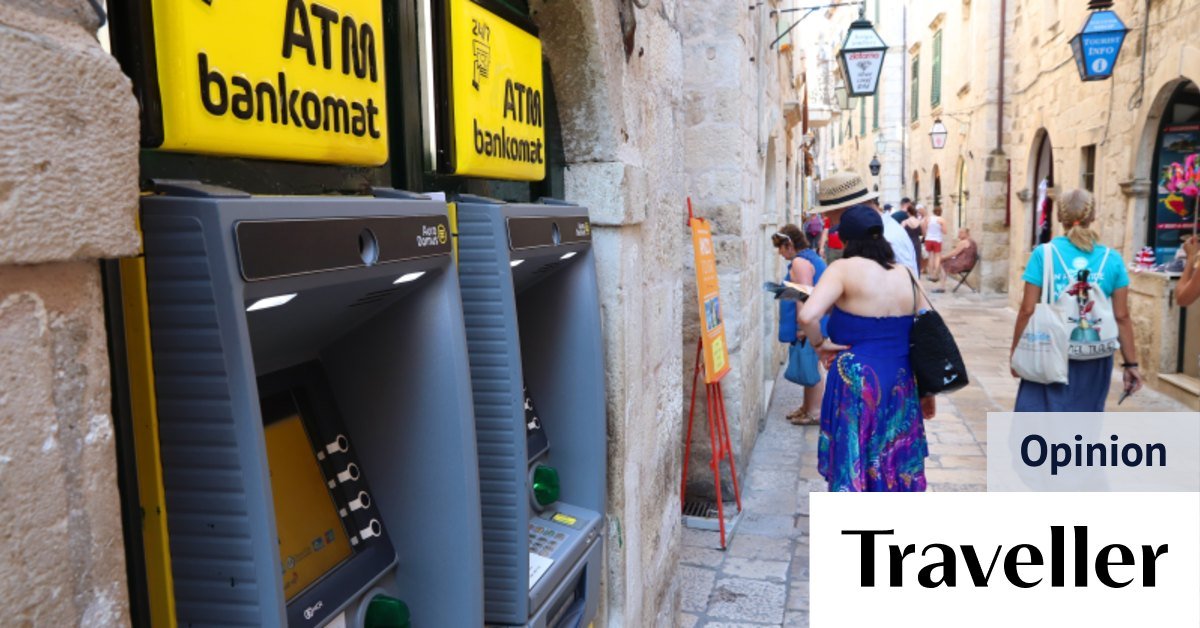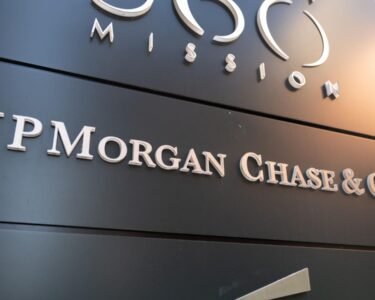Contactless payments made using either a card or a digital wallet such as Google Pay or Apple Pay are more secure than paying with a card inserted into a payment terminal and authenticated with a PIN. The information that is retrieved when a card is inserted into a terminal can be hacked, but in the case of contactless payments, your card or digital wallet details are not shared with the merchant during the processing of the transaction. Contactless payments use tokenisation, replacing the card details with an alternate code, the “token”. Even if a hotel, restaurant or retailer you’ve paid is hacked, the hacker cannot gain access to your credit or debit card details.
However, contactless payments don’t always work overseas. Sometimes you will have no choice but to insert your card and key in your PIN, but make contactless payments your default choice.
How to spot an ATM skimmer

ATMs inside bank premises offer greater security than hole-in-the-wall terminals.Credit: Getty Images
Wiggle the card slot to check for any loose attachments. If it looks bulkier than usual, that could be a sign of a potential hazard. Always use your free hand to cover the keypad when you tap in your PIN, and ATMs inside bank premises offer greater security than hole-in-the-wall terminals.
Smart tips for using your cards
If you’re using a new card specifically to pay for your travels overseas, try using it before you head off.
If you’re relying on credit card travel insurance, check the fine print. Essentially, the traveller must use their card to pay for either all or a portion of their travels above a specified amount. If you’re hiring a car and declining the operator’s full damage waiver cover, make sure the excess cover that comes with your credit card insurance is sufficient.
It’s too easy to tap your card to pay for goods and services when you’re away without knowing how much it’s costing you in Aussie dollars until the transaction is complete. Xe has a currency converter app that tells you exactly how much that transaction is costing you in Aussie dollars.
When you’re out and about, don’t keep all your cards and cash in the same place. Take only what you need for the day. Two cards are sufficient, and if there are two of you, divide your cash and cards.
Keeping a low balance on your debit card helps protect you from fraud. Some cards can be frozen when a transaction is completed by using an app associated with the card, preventing any further transactions until the card is unfrozen via the app.
To prevent your card from being blocked, tell your bank or financial institution when and where you’re travelling. You can usually do this via their website.
Stick with your usual cards or go with a travel money card?
Travel money cards are essentially debit cards with a difference. Deposit Aussie dollars to your account and you can purchase foreign currency which is loaded onto a card. That foreign currency can be used overseas to buy goods, settle bills or withdraw from ATMs.
If you’re hopping around between countries you can select to have your Aussie dollars converted into several currencies. This is sold as a convenience, but that’s not always so. Say you have your travel money split 50-50 between euros and UK pounds.
If you don’t have enough pounds to cover a UK transaction the card will borrow from your euros. You’ve made two currency conversions, from dollars to euros and euros to pounds, and on each of those conversions your dollars are worth less due to the exchange rate.
That’s one reason I keep my travel money card loaded with Aussie dollars and accept the currency conversion rate at the point of exchange, whether it’s an ATM, a hotel or a restaurant.
Which card?
I’ve been using the Wise Travel Money Card since pre-COVID days, and in Europe, Asia and North Africa it’s never let me down. My Aussie dollars are converted to foreign currency at the mid-market rate which is as good as you’ll get.
As well as a physical card, my Wise card is stored in my digital wallet. I can freeze and unfreeze it using the app, I can keep the balance low, and it takes only minutes to transfer funds to the Wise card from my bank account. It’s also the preferred card for many frequent travellers.
The ‘fee-free’ currency conversion myth
Loading
Some travel money cards offer fee-free currency conversions, but as financial institutions tilt the exchange rate in their favour, the “fee free” claim is irrelevant. The crucial question is how much local currency your card provider gives you for the Aussie dollars you deposit. Find the current mid-market rate by using the XE app.
Card comparison
How much would it cost to load $US1000 or €1000 onto a travel money card, from best to worst? (Prices at February 11, 2025)
Wise Travel Money Card
$US1000 will cost $1600.92
€1000 will cost $1648.70
CommBank Travel Money Card
$US1000 will cost $1658.65
€1000 will cost $1712.33
Qantas Pay Card
$US1000 will cost $1669.78
€1000 will cost $1728.91




